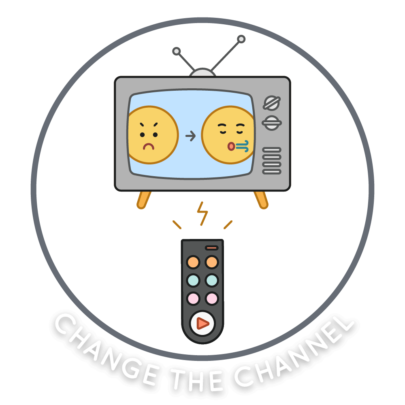
Introduction
Fostering emotional intelligence lays the groundwork for nurturing resilient and socially adept young learners. An integral part of this process is teaching young learners how to regulate their emotions. One effective approach is known as Changing the Channel on Feelings. This method helps children recognize and manage their emotions, paving the way for improved self-awareness and social interaction. In this blog we will talk about how to teach our youngest learners to Change the Channels on Feelings by taking breaks.
Importance for Pre-K and Kindergarten Students
Starting early with emotional regulation sets a strong foundation for children’s future well-being. Pre-K and Kindergarten students are at a crucial developmental stage, where they begin to understand and express their feelings. Introducing the concept of Changing the Channel on Feelings provides them with valuable tools to cope with challenging emotions, enhancing their resilience and emotional stability.
Lesson Plan
Warm-Up (5 minutes)
Start with a relaxed conversation about emotions, using relatable examples. For instance, you can ask the students about times when they felt happy, sad, or excited. This approach helps create a comfortable atmosphere for discussing emotions and sets the stage for further exploration of emotional regulation.
Theoretical Part (10 minutes)
Introduce the concept of Changing the Channel on Feelings. Explain that, like changing TV channels, they can shift from negative to positive emotions using strategies like taking breaks and deep breathing. For example, when they feel frustrated because they can’t solve a puzzle, they can take a break by stepping away from it and doing something else they enjoy, like drawing or playing with blocks.
Practical Part with Interactive Worksheet: “I Need a Break” (10 minutes)
Guide students through the “I need a break” worksheet, directing them in completing Part 1 by tracing words and progressing to Part 2, where they navigate scenarios of characters seeking a break during intense emotions.
Unlock the I Need a Break Interactive Worksheet
by signing up for a free trial today – no credit card required!
Get your Interactive Worksheet here!
Instant access to thousands of no-prep social skills activities, over 800+ video lessons, and engaging games designed to enhance learning and development.
Reflection (5 minutes)
Create a supportive space where students can openly share their experiences and insights. Encourage them to express how they felt before and after engaging in the “I need a break” activity. Here are some questions you can ask to guide the discussion:
- Did you find the scenarios in Part 2 of the “I Need a Break” activity relatable? Can you think of a time when you or someone you know needed a break because of strong emotions?
- Can you describe a time when you felt a big emotion like frustration or sadness? How did you handle it?
- What did you learn about taking breaks when you’re feeling overwhelmed?
- What other strategies can you think of to help you feel better when you’re upset?
Conclusion
Teaching young learners how to Change the Channel on Feelings is not just about managing emotions in the moment; it’s about equipping them with lifelong skills for emotional well-being and resilience. By providing them with strategies to navigate challenging feelings, we empower them to face life’s ups and downs with confidence and adaptability. As educators, caregivers, and mentors, let’s continue to prioritize and support the emotional development of our young learners.
Sample Video
Students learn best from watching real students their own age model skills. Try out this sample video lesson. We offer our entire Social-Emotional Learning platform free for 14 days here!
Related Blog Posts:
How to Talk to Students About Big Feelings
Empowering Pre-K Minds: Cultivating Emotional Recognition – Lesson Plan & Activities
Empathy in Early Education: Teaching Pre-K and Kindergarten Students to See Others’ Perspectives


